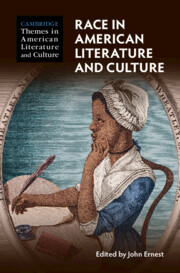Book contents
- Race in American Literature and Culture
- Cambridge Themes in American Literature and Culture
- Race in American Literature and Culture
- Copyright page
- Contents
- Contributors
- Acknowledgments
- Introduction
- Part I Fractured Foundations
- Part II Racial Citizenship
- Part III Contending Forces
- Part IV Reconfigurations
- Part V Envisioning Race
- Part VI Case Studies
- Chapter 19 Collective Biographies and African American History
- Chapter 20 Aztlan for the Middle Class
- Chapter 21 The Racial Underground
- Chapter 22 Literature in Hawaiian Pidgin and the Critique of Asian Settler Colonialism
- Chapter 23 Celeste Ng’s Little Fires Everywhere and the Burning House of American Literature
- Part VII Reflections and Prospects
- Index
Chapter 23 - Celeste Ng’s Little Fires Everywhere and the Burning House of American Literature
from Part VI - Case Studies
Published online by Cambridge University Press: 26 May 2022
- Race in American Literature and Culture
- Cambridge Themes in American Literature and Culture
- Race in American Literature and Culture
- Copyright page
- Contents
- Contributors
- Acknowledgments
- Introduction
- Part I Fractured Foundations
- Part II Racial Citizenship
- Part III Contending Forces
- Part IV Reconfigurations
- Part V Envisioning Race
- Part VI Case Studies
- Chapter 19 Collective Biographies and African American History
- Chapter 20 Aztlan for the Middle Class
- Chapter 21 The Racial Underground
- Chapter 22 Literature in Hawaiian Pidgin and the Critique of Asian Settler Colonialism
- Chapter 23 Celeste Ng’s Little Fires Everywhere and the Burning House of American Literature
- Part VII Reflections and Prospects
- Index
Summary
This essay reads Celeste Ng’s 2017 novel Little Fires Everywhere as a meta-literary investigation into the relationship between literary and cultural form and the series of racial entanglements (black, white, and Asian American) played out in its neoliberal 1990s setting. The novel invites us to see that decade – from its discussions of presidential race to its often black/white and nationally delimited, Anglophone-based landscape of American literary criticism – from the vantage point of the present. In so doing, Ng explores the features of postracial form, which soon yield to the tragedy of color-blindness as the mask of racial violence. Finally, in its engagement with The Scarlet Letter, her novel allows us to ask what race in Hawthorne bequeaths to our own moment, and how our own moment reiterates the forms of unfreedom created by Hawthorne’s era and then imaginatively – spectacularly, as Toni Morrison might say – occluded by so much American literature and culture ever since.
- Type
- Chapter
- Information
- Race in American Literature and Culture , pp. 379 - 394Publisher: Cambridge University PressPrint publication year: 2022

